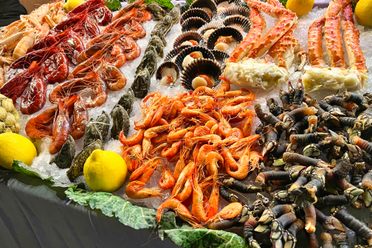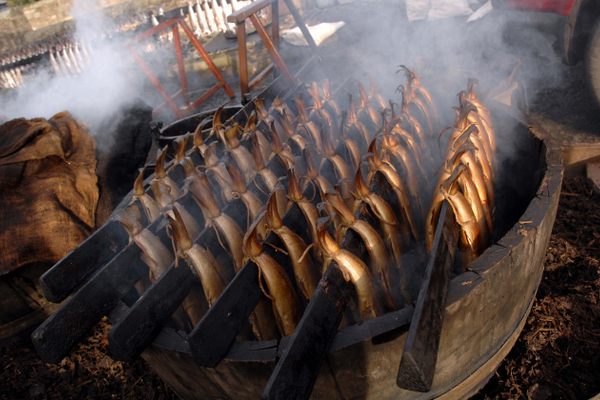If you’re a species that has spent millions of years sucking blood, getting cooked in a vat of your own is due punishment. Such is the plight of the parasitic sea lamprey, which gets boiled in a bloodbath as part of traditional Portuguese cuisine.
At first glance, lampreys might seem more like monsters than meals. These parasites resemble wormy eels with sharp, winding rows of teeth. To reproduce, a male lamprey constricts a female to squeeze out her eggs. He ejaculates, then they die. In the North American Great Lakes, they’re not seen as dinner, but as parasites that kill other species and accumulate mercury.
But one man’s horrific, prehistoric pest has been another man’s delicacy for thousands of years. Roman servants prepared lamprey at Julius Caesar’s banquets. During the Middle Ages, only members of the upper class had access to its hearty, prized meat. Across Southwestern Europe, Christians were drawn to lamprey’s texture, akin to slow-cooked steak, and its lack of fishy aftertaste. Demand became especially high during Lent, a period of religious abstention that forbids eating land animals.
In Portugal, stewed lamprey is still a suitable beef replacement. From January through April, you’ll find this creature marinated in its own blood and served with rice all over the country. Every March, 30,000 gourmets flood the small village of Montemor-o-Velho for the annual Lamprey and Rice Festival. During the Christmas season, nuns, bakers, and families celebrate by fashioning sea monsters out of sweet egg yolk. This treat, known as Lampreia de Ovos, features a lamprey replica covered in icing—a more kid-friendly version than the blood-coated dish.
Where to Try It
-
Festival of Rice & Lamprey
Montemor-o-Velho, 3140-258, PortugalAn annual showcase of lamprey dishes in local restaurants along with snacks and vendors in the town square.
Written By
 rachelrummel
rachelrummel
Sources
- www.reuters.com/article/us-food-portugal-lamprey/slimy-and-prehistoric-ill-have-it-cooked-in-blood-idUSL0549208320080305
- www.huffingtonpost.com/entry/sea-lamprey-recipe_us_56265381e4b0bce34702343a
- munchies.vice.com/en_us/article/8qkve3/the-sea-lamprey-society-gathered-to-eat-the-most-gruesome-animal-in-history
- blog.syracuse.com/outdoors/2013/04/post_45.html
- www.cm-montemorvelho.pt/index.php/component/k2/item/715-arroz-de-lampreia
- books.google.com/books?id=ugGXBQAAQBAJ&pg=PA295&dq=sea+lamprey+reproduction+death&hl=en&sa=X&ved=0ahUKEwiBqb-Hwq_YAhUrct8KHVzbBZMQ6AEIKzAB#v=onepage&q=sea%20lamprey%20reproduction%20death&f=false
The Atlas Obscura Podcast is Back!






















